Abstract
Monthly bacteriological water testing of traditional water sources (ponds, rivers, unprotected springs and traditional wells) used by five villages in northeastern Imo State, Nigeria, was conducted during the period January 1983 to August 1985. The membrane-filtration technique was used to detect faecal coliforms (FC) and faecal streptococci (FS). Evidence of faecal pollution was seen throughout the year for all water sources. During the study period, the monthly geometric mean counts per 100 ml of water (all sources combined) ranged from 760 to 17877 for FC and from 678 to 17394 for FS. The peak period of faecal pollution occurred during the transition between the dry and wet seasons and in the early wet season. During this peak pollution season (February-May), the geometric mean counts were 2.5-7.2 times higher than in the remaining part of the year for all source types except rivers, with ponds being the most heavily polluted. Preliminary findings on the sensitivity and specificity, in this tropical environment, of the standard membrane-filtration technique for enumerating FC are presented. The implications of the findings of this study for the environmental control of waterborne and hygiene-related diseases are discussed.
Full text
PDF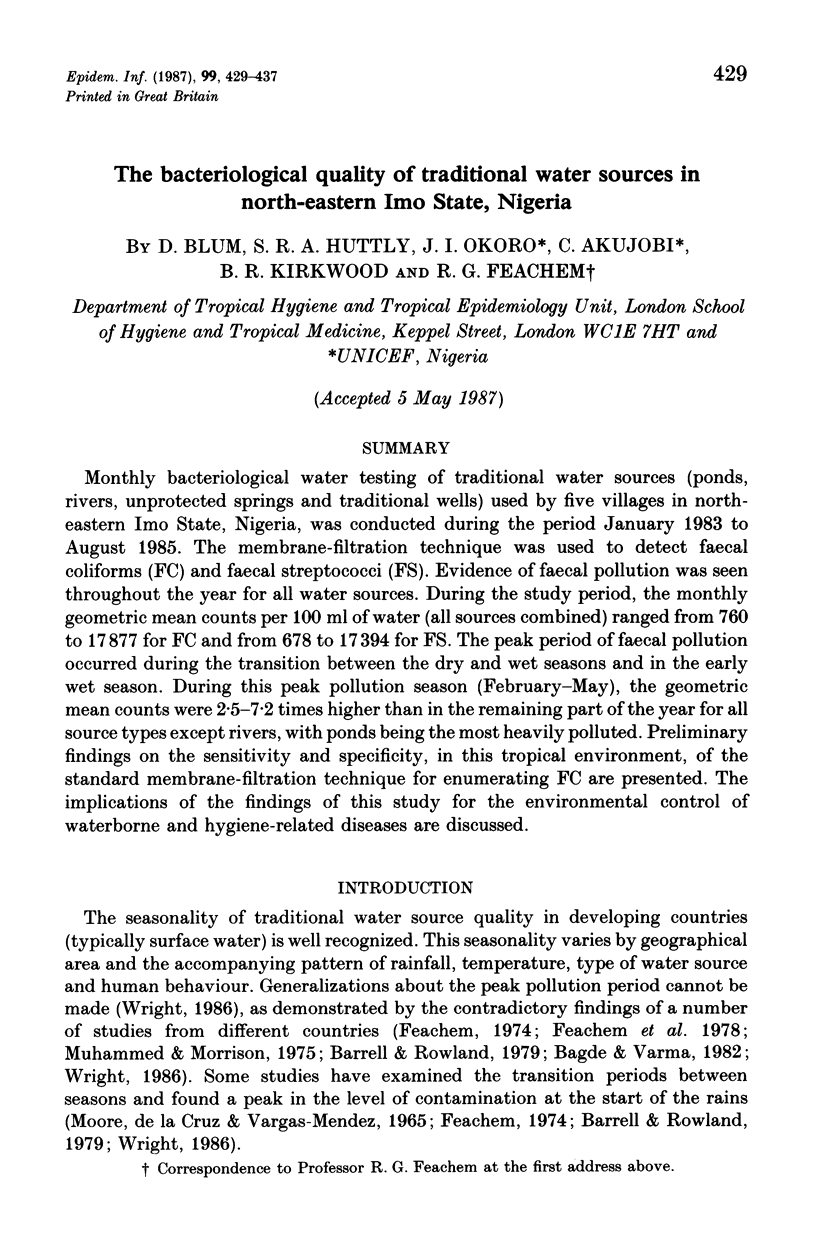


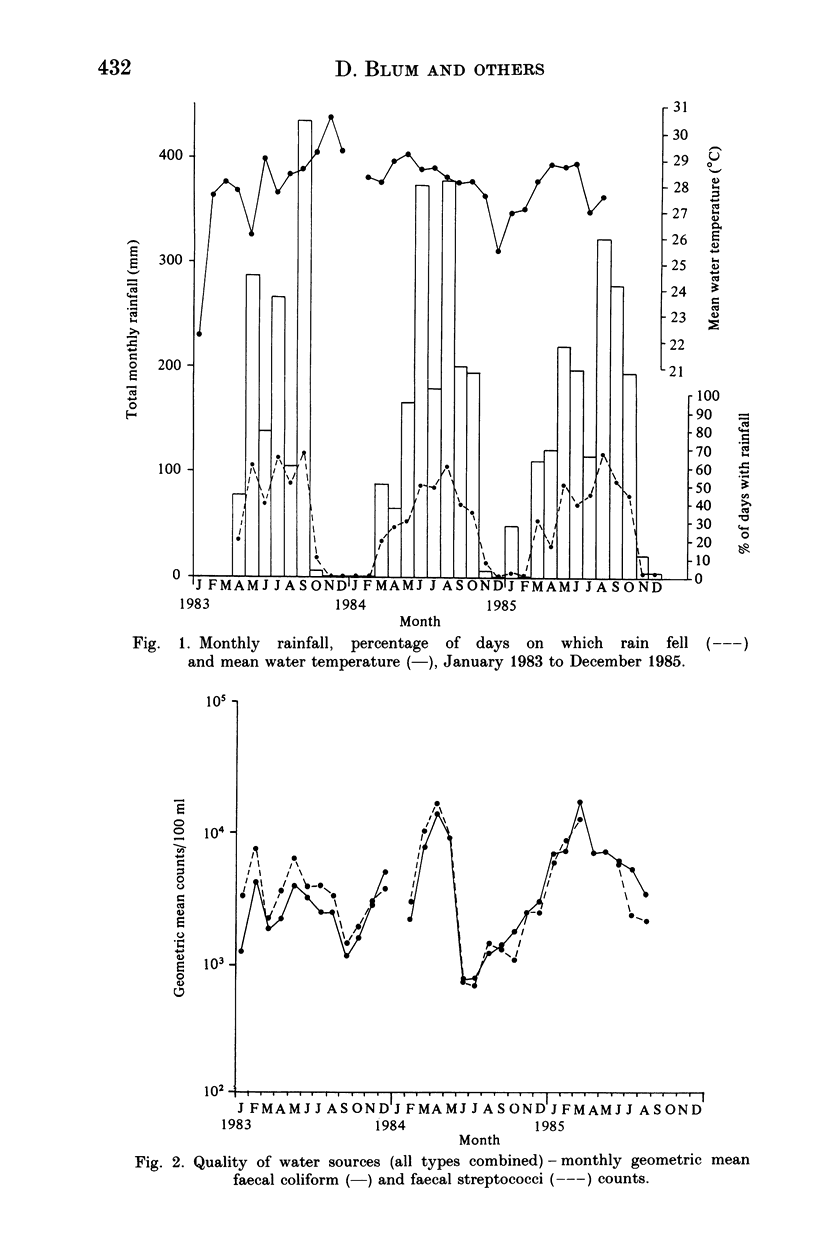

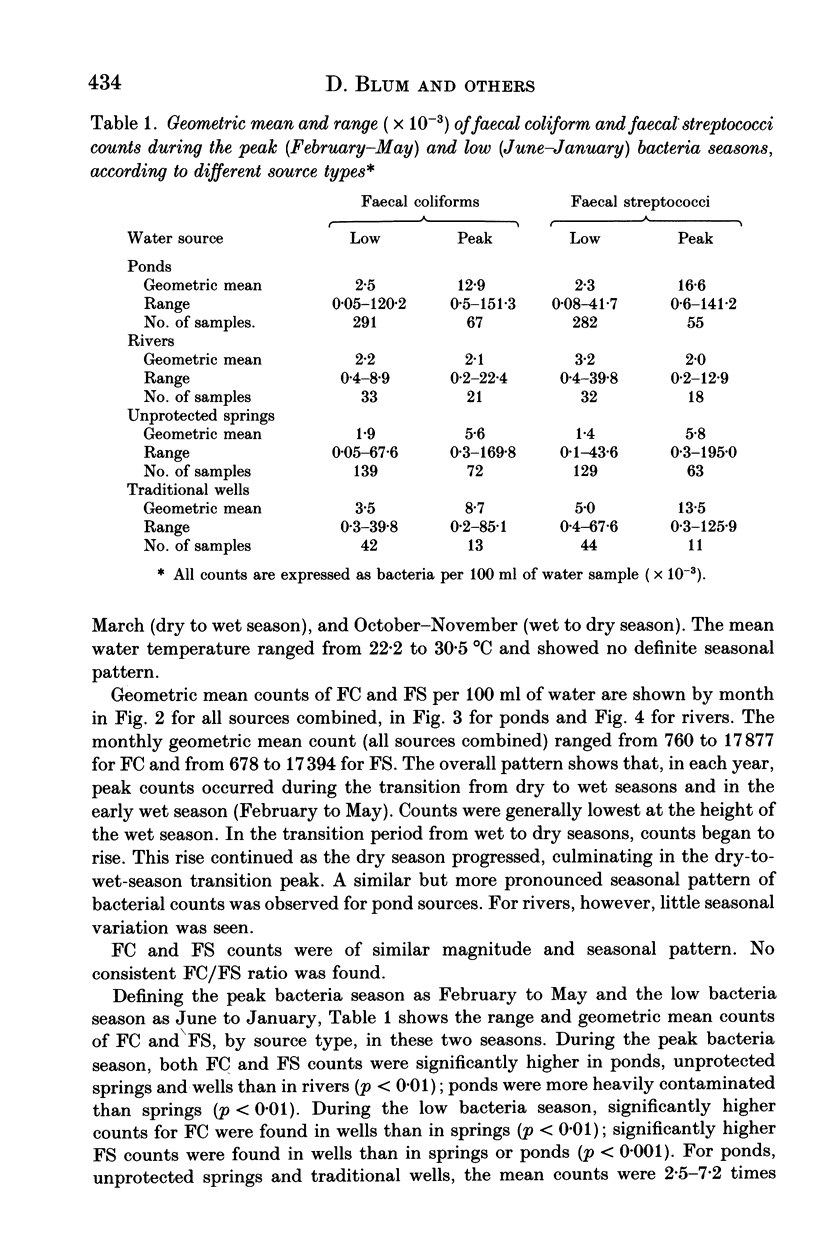

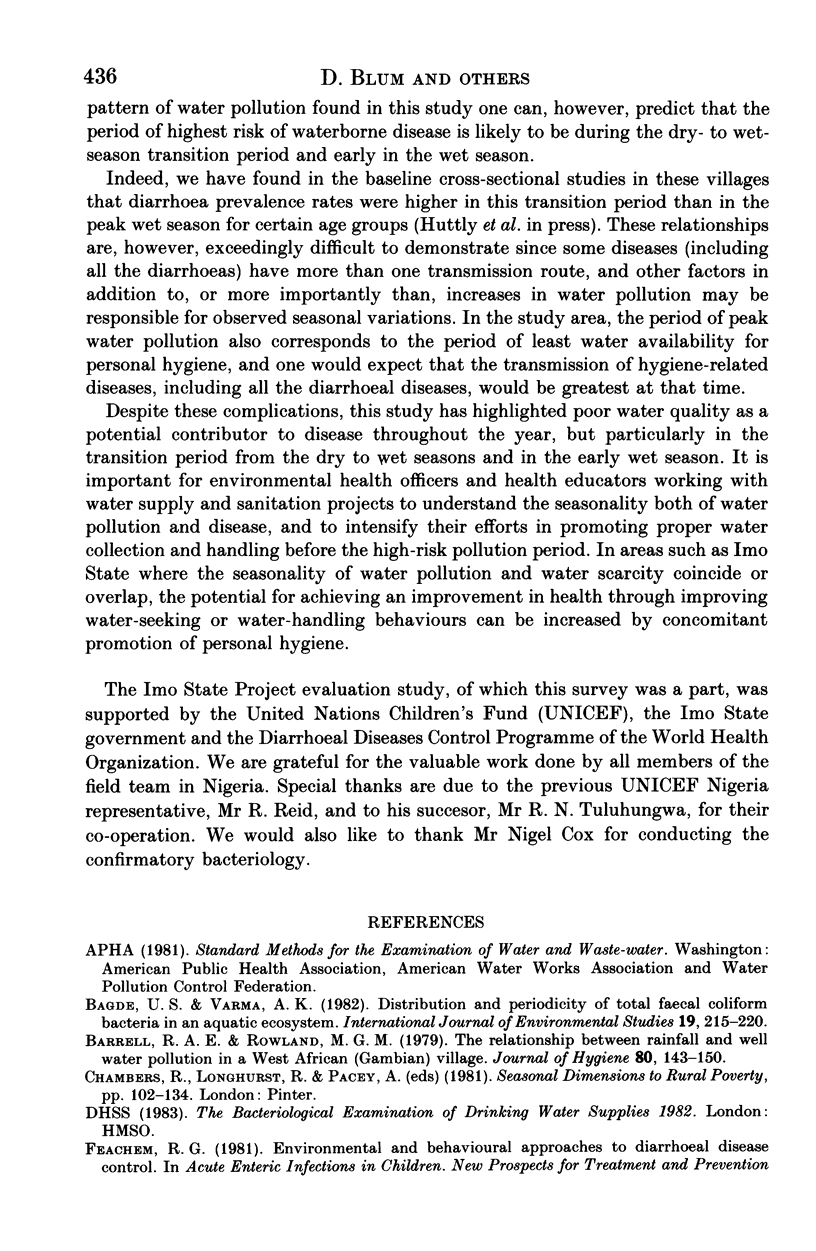
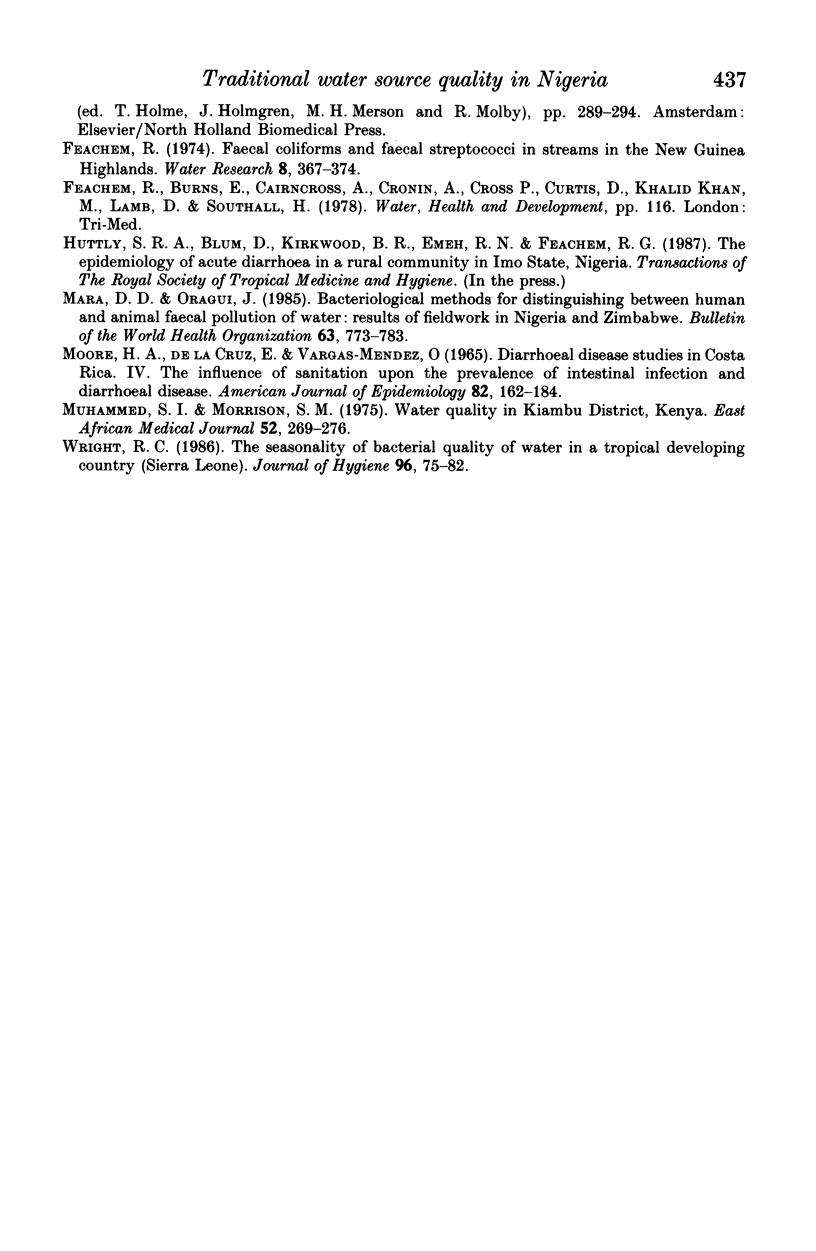
Selected References
These references are in PubMed. This may not be the complete list of references from this article.
- Barrell R. A., Rowland M. G. The relationship between rainfall and well water pollution in a West African (Gambian) village. J Hyg (Lond) 1979 Aug;83(1):143–150. doi: 10.1017/s0022172400025912. [DOI] [PMC free article] [PubMed] [Google Scholar]
- Mara D. D., Oragui J. Bacteriological methods for distinguishing between human and animal faecal pollution of water: results of fieldwork in Nigeria and Zimbabwe. Bull World Health Organ. 1985;63(4):773–783. [PMC free article] [PubMed] [Google Scholar]
- Moore H. A., De la Cruz E., Vargas-Mendez O. Diarrheal disease studies in Costa Rica. IV. The influence of sanitation upon the prevalence of intestinal infection and diarrheal disease. Am J Epidemiol. 1965 Sep;82(2):162–184. doi: 10.1093/oxfordjournals.aje.a120542. [DOI] [PubMed] [Google Scholar]
- Muhammed S. I., Morrison S. M. Water quality in Kiambu District Kenya. East Afr Med J. 1975 May;52(5):269–276. [PubMed] [Google Scholar]
- Wright R. C. The seasonality of bacterial quality of water in a tropical developing country (Sierra Leone). J Hyg (Lond) 1986 Feb;96(1):75–82. doi: 10.1017/s0022172400062550. [DOI] [PMC free article] [PubMed] [Google Scholar]


